Search and Rescue (SAR) training is the foundation of effective, safe, and coordinated missions. This guide brings together everything you need to know - from free introductions to advanced certifications - plus gear recommendations, standards alignment, team readiness, and pathways for specialized roles. Whether you are brand new, building on years of experience, or managing a SAR team, you’ll find practical, credible, mission‑tested insights here.
Written by Mike McKenna, nationally credentialed SAR instructor with 20+ years of field experience.
TEAM Solutions - Ultimate Guide Snapshot
- Scope: SAR foundations, specialized skills, certifications, gear, standards, team readiness, and career paths.
- Training Formats: Free email primers, self‑paced online courses, downloadable toolkits, team enrollment, certification programs.
- Standards Alignment: FEMA/NIMS principles; NASAR SARTECH; NFPA 2500; ASRC FTM/FTL; state SAR programs.
- Specializations Included: K9 handling, drone/UAS operations, disaster response, navigation, ICS/incident command, responder safety.
- Audience: New volunteers, active responders, team leaders, agency managers, and those exploring SAR careers.
- Reach: Used by individuals and teams across the U.S., Canada, Europe, Australia, and beyond.
Why This Guide Exists
- Understand the SAR training landscape.
- Identify the right entry point for your role and goals.
- Navigate the maze of standards and certifications.
- Make informed gear and readiness decisions.
- Connect training to real‑world mission readiness.
Search and Rescue (SAR) is not just a role - it’s a calling. The work is demanding, often unpaid, and emotionally challenging. Before deciding to volunteer, consider these key questions:
- What knowledge and skills are required?
- How much time and money will it cost?
- How and where can you get involved?
While some join SAR for personal reasons, like enhancing their resume or enjoying the outdoors, these motivations rarely sustain long-term commitment. Instead, those who thrive in SAR are motivated by the opportunity to help others during their most challenging moments and to face tasks and environments that many cannot.
What SAR Training is Available Online?
Level 1: Free SAR Primer Training via Email
This two-week, email-based introductory course provides a free preview of the foundational knowledge to help you decide if SAR is the right path for you. Lessons are drawn from the SAR Fundamentals course and offer a no-obligation way to explore the field.
- How to Enroll: Enter your name and email to begin. New subscribers only.
- Note: If you don’t receive a confirmation email, check your junk folder.
Quick Facts - Free SAR Primer Training via Email
- Duration: 2 weeks
- Delivery: Email lessons
- Cost: Free
- Audience: Interested but not yet committed
- Sign-Up: Name + email
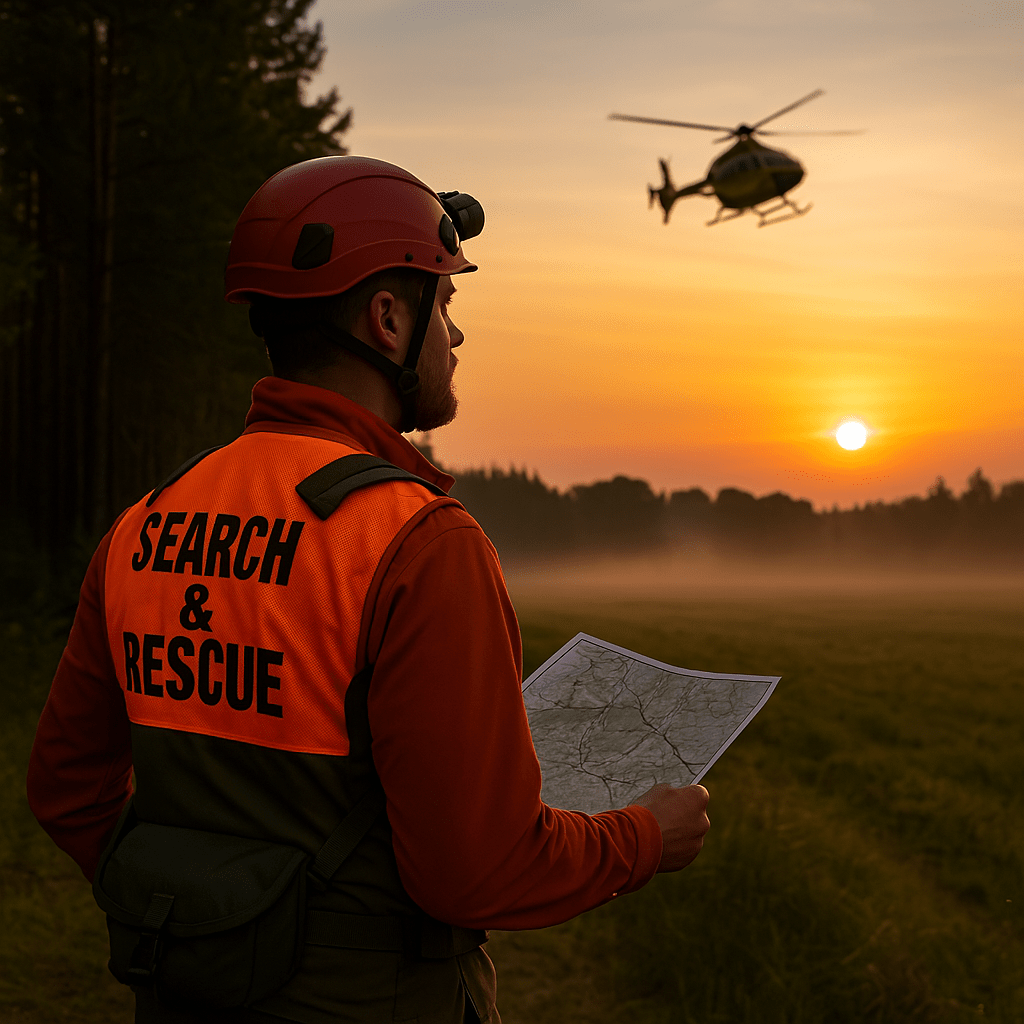
Your SAR Journey Starts Here
Free 6-Lesson Primer
Trusted by 10,000+ responders & volunteers
✅ 6 concise, practical email lessons.
✅ Decide if SAR is your next mission - before committing.
✅ Real-world fundamentals from a veteran responder.
Backed by real-world missions, FEMA-aligned training, and 20+ years of SAR expertise.
🛡️ If you don’t find value in the first email, unsubscribe anytime - no pressure.
Do TEAM Solutions Courses Meet National SAR Standards?
Yes. TEAM Solutions courses are designed to meet or exceed nationally recognized guidelines for Search and Rescue responder knowledge. They align with FEMA/NIMS principles and reflect components of leading standards such as:
- NASAR SARTECH – Cognitive and planning-level topics reflected in SAR Fundamentals and Search Strategy.
- NFPA 2500 – Awareness-level competencies in ICS, risk assessment, and scene coordination.
- ASRC FTM/FTL – Emphasis on lost person behavior, clue awareness, and field team operations.
- State-Level SAR Programs – Coverage of FEMA-aligned ICS, HazMat awareness (OSHA 1910.120), and responder safety.
While these online trainings don’t replace in-person field evaluations, they are widely used across the U.S., Canada, Europe, and beyond to support onboarding, advancement, and refresher-level training.

Level 2: Search & Rescue (SAR) Fundamentals Online Course
Want More Than Just a Free email Primer? Start with SAR Fundamentals.
If you’re looking for structure, credibility, and skills you can apply right away - but aren’t ready to commit to the full certification track - the SAR Fundamentals course is the perfect next step.
This standalone, self-paced course delivers practical, no-fluff training on core SAR principles, responder roles, safety protocols, and search tactics.
The course is ideal for prospective team members or curious learners who want to gain real-world knowledge and confidence.
Will your team accept the training?
Many already do.
The SAR Fundamentals course was designed by a nationally credentialed SAR instructor with 20+ years of field experience and trusted by responders in 8+ countries - including the U.S., UK, Australia, and beyond.
✓ FEMA/NIMS aligned
✓ National SAR standards
✓ Print-ready certificate included
The certificate is FEMA/NIMS-aligned and backed by a course summary you can share with your team leader or trainer. TEAM Solutions courses are built to meet or exceed national SAR knowledge standards - including NASAR SARTECH cognitive topics, NFPA 2500 awareness-level guidance, ASRC FTM/FTL expectations, and general state-level responder requirements.
Curious how your team might view this course? 
While it’s not a substitute for field evaluations, it offers a trusted way to build your readiness - on your terms, and at your pace.
“This was the next best thing to an in-person class - and better than reading a textbook." ~ Paul, SAR Responder
Finish the course and earn a Certificate of Completion - a meaningful milestone that reflects your growing readiness and commitment.
Start building your SAR foundation today - on your terms, at your pace.
Level 3: SAR QuickStart Bundle™
If you’re ready to go beyond the basics but not yet committed to a full certification program, the SAR QuickStart Bundle™ is your ideal next move.
This entry-level training package includes two of the most commonly required online SAR courses - Search and Rescue (SAR) Fundamentals and Bloodborne Pathogens Awareness for Responders - along with a field-tested digital toolkit and an exclusive training audio drawn from the bestselling book So That Others May Serve™.
It’s built for those who want to train with clarity, earn credible certificates, and show their team they’re serious - even before being accepted onto a roster. No membership. No nonsense. Just the essentials.
Level 4: SAR Responder Certification Online
For individuals and teams serious about SAR, this essential certification track delivers a comprehensive, standards-aligned training platform - with unlimited access to all SAR-related courses and tools in one place.
Certification Features:
- Unlimited access to mission-tested SAR topics including:
- SAR Fundamentals
- Disaster Response
- Bloodborne Pathogens
- K9 Handling
- Navigation
- Drone Operations
- Emergency Operations Center Collaboration
- Responder Safety
- The Incident Command System (ICS)
- More inside the full catalog ...





How do I Enroll a Team?
Team Team Enrollment and Advanced Management
Designed for SAR teams/agencies, CERT programs, military units, and team leaders managing multiple responders.
Team Enrollment Options
- Single-Payer Model: One leader pays for all team members.
- Ideal for agency-sponsored teams or grant-funded groups.
- Individual Enrollment Model: Each team member enrolls individually and is later linked to the team.
Benefits of Team Enrollment:
- Completion certificates aligned with FEMA/NIMS and national SAR standards
- Certificates and transcripts for members.
- Self-paced courses accessible on any device.
- Built-in note-taking tools.
- Group access available from $15/member.
Advanced Team Management Features
-
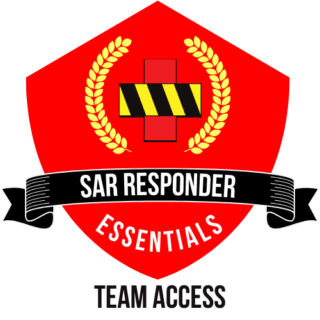
Search & Rescue (SAR) Responder Essentials Certification – Flexible Team Access
From: $15.00 / month / Seat Select options This product has multiple variants. The options may be chosen on the product page
- Customized Team portal
- You assign Group Leaders
- Member monitoring & support
- Member Transcripts
- Member progress reports
Ideal for training managers who need more than just basic access:
- Member progress tracking.
- Certificate and transcript management.
- Custom course assignments.
What Courses are Available?
Course Catalog and Key FAQs
Browse All Courses
Explore the full range of courses covering foundational to advanced SAR knowledge.
Key FAQs
- Why e-Learning? Nearly 85% of onboarding and refresher training is expected to shift online, making it a convenient and effective option.
- Costs of SAR Volunteering: Understand time and financial commitments before joining. Read the Case Study: "How Much Does It Cost To Be A Search & Rescue Volunteer?" here.
- Certifications: SAR training requirements vary by local, state, and federal standards. While TEAM Solutions is not a government agency, our courses are FEMA/NIMS-aligned and reflect key elements of national SAR standards like NASAR, NFPA 2500, ASRC, and others. Many SAR teams already use our training to onboard or upskill members. Unsure? We're happy to provide a course summary you can share with your team lead. Gain clarity on your requirements by reading this article.

In many cases, yes. While there’s no single national SAR credential, many teams recognize standards-aligned training when it's mission-tested and professionally delivered. Our courses are FEMA/NIMS-aligned and designed by a nationally credentialed instructor. Teams across the U.S., Canada, and beyond already use TEAM Solutions to onboard or refresh responders. Want to confirm? Ask us or request a summary.
Just Need Forms, Templates, or Job Aids?


Can You Explain SAR Certifications and Standards?

Our courses are designed to meet or exceed nationally recognized guidelines, ensuring your training is respected by SAR teams across the U.S., Canada, and Europe.
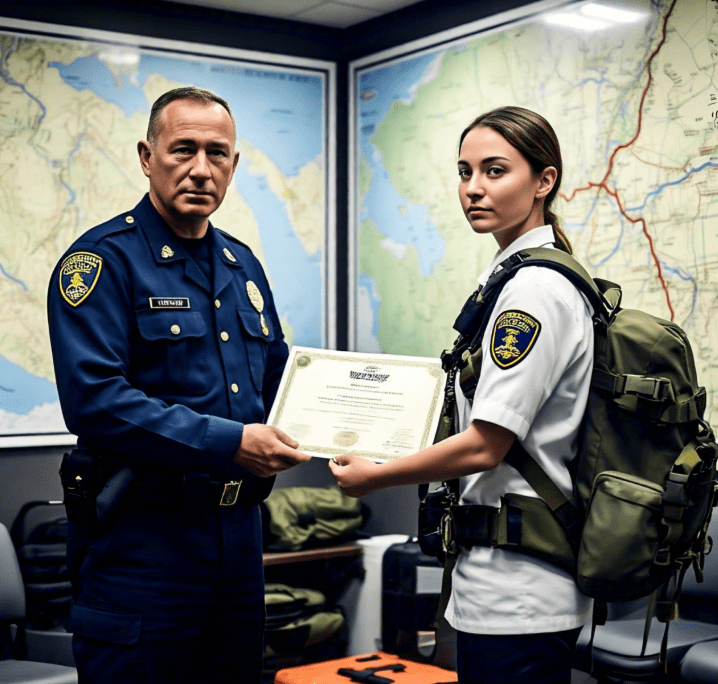
State-Level SAR Standards
Some states, like Oregon and New Mexico, have specific SAR standards. Reciprocity across states is rare, so responders may need to re-certify if they relocate.
Federal-Level SAR Standards
Federal standards are diverse, with FEMA leading in urban SAR guidelines. FEMA also offers CERT (Community Emergency Response Team) training for disaster response.
Local-Level SAR Standards
Local SAR teams often set their own standards. Many align with NASAR’s certifications, but these are typically not sufficient on their own. Teams often blend various certifications to create a comprehensive training framework. To better understand how credentials fit together across the SAR landscape, explore the SAR Certification Essentials course - designed to help new and experienced responders make informed decisions.
Get Certified Without the Confusion
Feeling overwhelmed by all the acronyms and inconsistent standards? You’re not alone.
That’s why we created the SAR Certifications & Standards course - a practical, self-paced training that demystifies the local, state, and federal landscape of SAR credentials.



Already helping responders across the U.S. and Canada get clarity on their next steps.
Deeper Dive into Standards and Certifications
Read a breakdown on "How to Become a Mission Ready SAR Responder" for the full story on training, certification, and standards - or explore how our courses align with national SAR standards.
How Do I Become a Certified SAR Responder?
If you’re interested in joining a Search and Rescue (SAR) team, you’re signing up for more than just an exciting challenge - you’re committing to a service that saves lives. SAR is demanding but incredibly rewarding, requiring training, teamwork, and dedication. Here’s how to get started:
Step 1: Research Local SAR Teams
Not all SAR teams are the same. Some specialize in wilderness rescue, disaster response, K9 search teams, urban SAR, or technical rescue.
- Look for county, state, or nonprofit SAR teams in your area.
- Check their entry requirements (age, fitness, background checks, residency, etc.).
- Reach out to current members to learn about expectations.
Many SAR units operate as volunteer organizations under sheriff’s offices, emergency management agencies, or independent nonprofits.
Step 2: Get Physically and Mentally Ready
SAR work can be physically intense and mentally taxing.
- Stay fit – Endurance, strength, and stamina matter.
- Develop mental resilience – Missions can be long, frustrating, or emotionally difficult.
- Work on navigation skills – Knowing how to use a map, compass, and GPS is critical.
Step 3: Complete Required Training
Most teams require basic SAR training before field deployment. Common certifications include:
- SAR Basic Course – Covers search techniques, clue awareness, and survival.
- First Aid/CPR – A minimum requirement for responders.
- Wilderness First Aid (WFA) or Wilderness First Responder (WFR) – Critical for remote searches.
- Incident Command System (ICS-100 & ICS-200) – Required for many teams (FEMA training).
- Land Navigation – Knowing how to navigate in various terrains is essential.


Some teams may offer train-on-the-job programs, while others require you to obtain certifications independently.
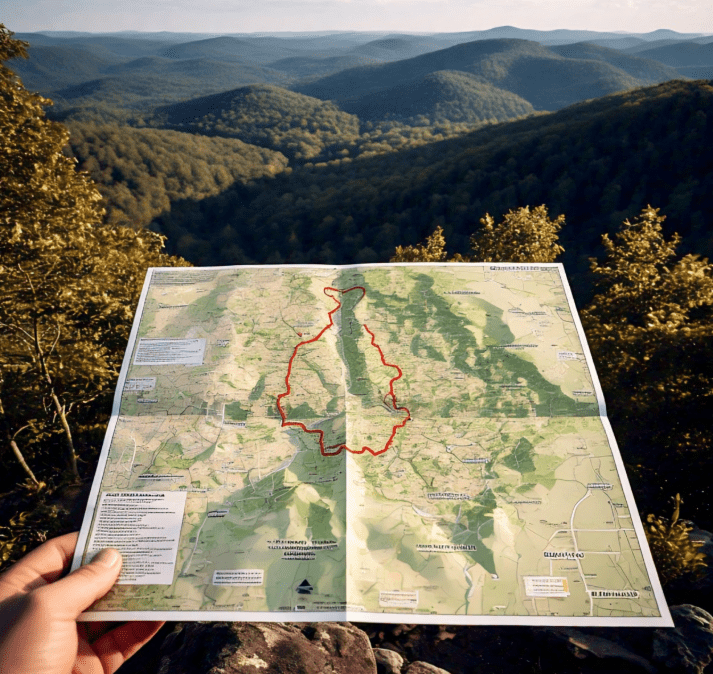
Step 4: Get the Right Gear
SAR volunteers typically supply their own gear, so investing in quality equipment is key. Essentials include:
- Durable, waterproof boots – Your feet are your most valuable asset.
- Weather-appropriate clothing – Layering is key for all-season readiness.
- A reliable backpack – To carry mission essentials like water, food, and medical supplies.
- Navigation tools – Map, compass, and GPS.
- A quality flashlight/headlamp – Night searches are common.
Your team may have a required gear list—be sure to follow their recommendations.
Step 5: Attend SAR Training and Drills
SAR is not just about responding to calls - you must train regularly to stay proficient.
- Join monthly training exercises to practice skills in real-world conditions.
- Learn about rope rescue, K9 handling, disaster response, and communications.
- Participate in mock search operations to gain experience.
The more you train, the more valuable you become to your team.
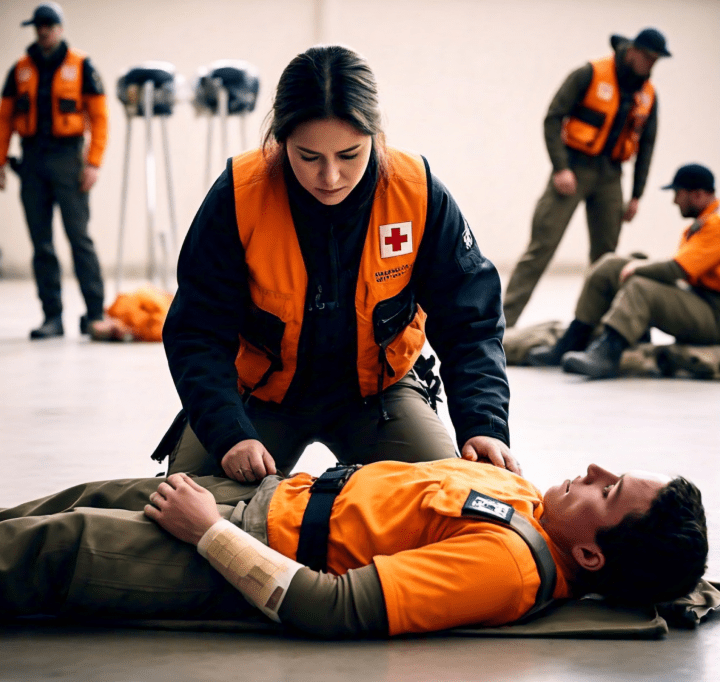
Step 6: Be Ready for Deployment
Once you meet your team’s requirements, you’ll be placed on-call for missions.
- Understand that searches can happen anytime - day or night, good weather or bad.
- Be prepared for long hours, tough terrain, and sometimes heartbreaking outcomes.
- Stay flexible - SAR work requires patience and adaptability.
Step 7: Continue Learning and Advancing
SAR is a lifelong learning process. As you gain experience, consider:
- Advanced SAR certifications – Technical rescue, tracking, flood and swiftwater rescue, or disaster response.
- Specializations – K9 handling, drone operations, or medical response.
- Leadership roles – Mentoring new recruits or serving as a SAR instructor.
Remember, SAR is a Commitment, Not Just an Adventure
Becoming a SAR volunteer isn’t just about thrill-seeking—it’s about serving others in their most desperate moments. If you have the discipline, dedication, and heart to answer the call, SAR can be one of the most fulfilling ways to make a difference. Are you ready?
What are the Gear Essentials for SAR?
The Essentials You Can’t Overlook:
When it comes to Search and Rescue (SAR), your gear can mean the difference between success and struggle—or even life and death. The right equipment doesn’t just make the job easier; it enhances safety, efficiency, and endurance in the field. While gear choices vary based on terrain, climate, and mission type, there are three non-negotiables every SAR responder should invest in: good boots, quality weather gear, and a reliable flashlight.
Learn from Those Who Know the Terrain
One of the best ways to refine your gear selection is to consult experienced responders who regularly operate in your area. What works in the desert won’t hold up in the mountains, and cold-weather SAR presents different challenges than flood response. Seasoned team members can provide hard-earned wisdom on what actually holds up in real-world conditions—insight that’s often more valuable than manufacturer claims.
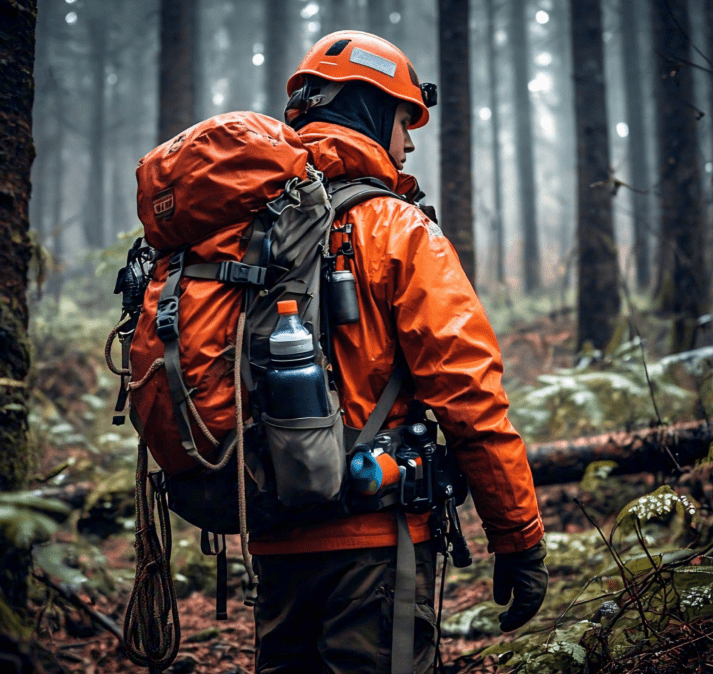
1. Boots
Your Foundation in the Field
Your feet are your primary mode of transportation in SAR, and subpar boots can lead to blisters, fatigue, and even injury. A quality pair of SAR boots should provide:
- Ankle support – Reduces strain on uneven terrain.
- Water resistance – Keeps feet dry in wet conditions.
- Durability – Withstands miles of wear and tear.
- Comfort – Because hours in the field demand it.
Many responders swear by brands like Lowa, Salomon, or Danner, but the key is finding boots that fit your foot type and support long hours of movement under load.
2. Weather Gear
Protecting Against the Elements
Mother Nature is indifferent to your mission. Whether it's scorching heat, freezing cold, or relentless rain, being unprepared for weather conditions can quickly turn you from rescuer to someone who needs rescuing.
Layering is essential:
- Base layer – Moisture-wicking to keep sweat off your skin.
- Insulating layer – Retains body heat in cold conditions.
- Outer shell – Waterproof and wind-resistant to shield against the elements.
Avoid cheap gear—a $40 rain jacket won’t cut it when you're hours into a mission in pouring rain. Look for Gore-Tex or eVent fabric for breathable waterproofing that won’t trap sweat.
3. A Quality Flashlight
Seeing (and Being Seen) Matters
Low visibility is a given in SAR—night ops, heavy fog, and dense forests can all challenge your ability to navigate and locate subjects. A dependable flashlight or headlamp should offer:
- At least 300 lumens for visibility.
- A red-light mode to preserve night vision.
- Long battery life and rechargeable options.
- Waterproof and impact-resistant construction.
Many SAR professionals carry both a primary flashlight (SureFire, Streamlight, or Fenix) and a backup headlamp (Petzl or Black Diamond) for hands-free operation.
Cheap Gear is Expensive in the Long Run
Investing in quality gear upfront saves money - and possibly your life - over time. Whether it’s boots that don’t give out, weather gear that keeps you functional, or a flashlight that won’t fail when you need it most, your equipment is part of your readiness and reliability as a SAR responder. Take the advice of those with experience, field-test your gear, and always prioritize function over fashion. When the call comes, you’ll be glad you did.
Are there Alternative Ways to Serve?
... Beyond Traditional Search and Rescue (SAR)?
Search and Rescue (SAR) is a demanding and rewarding commitment, but it’s not the only way to support your community in emergency response. If SAR isn't the right fit, there are many alternative service options that still allow you to contribute to disaster response, public safety, and emergency preparedness. Here are some impactful ways to get involved:
1. 4x4 and Off-Road Rescue Teams
Many SAR teams rely on 4x4 units and off-road rescue volunteers to access rugged terrain, transport personnel, and deliver supplies.
- Support SAR missions by providing transport in challenging environments.
- Assist in disaster response by delivering aid to hard-to-reach communities.
- Participate in vehicle recovery operations for stranded or lost individuals.
Some regions have dedicated off-road response teams that work alongside law enforcement and SAR groups.
2. Community Emergency Response Team (CERT)
CERT is a FEMA-backed volunteer program that trains everyday citizens in disaster response.
- Learn basic search and rescue, fire suppression, medical aid, and disaster preparedness.
- Assist in large-scale incidents when professional responders are overwhelmed.
- Provide community education and support before, during, and after disasters.
CERT teams are excellent for those who want to serve but may not have the time for full SAR training.
3. Drone Search and Public Safety Teams
Drones have become a game-changer in SAR and emergency response. Many agencies now have dedicated drone teams that assist in:
- Aerial searches for missing persons in difficult terrain.
- Damage assessments after disasters like floods, wildfires, and tornadoes.
- Providing situational awareness to emergency managers and first responders.
If you have a Part 107 Drone Pilot License, you may be able to volunteer with SAR teams, emergency management offices, or law enforcement agencies.
4. Police and Fire Auxiliary Units
Many law enforcement and fire departments have auxiliary or reserve programs for trained civilian volunteers.
- Police Auxiliary / Community Support Officers help with traffic control, event security, and community patrols.
- Fire Department Reserves assist in non-firefighting roles like logistics, rehab support, and emergency preparedness education.
- Disaster Response Teams within police and fire departments provide relief and coordination support during major incidents.
These roles provide valuable hands-on experience while directly supporting public safety agencies.
5. Community Policing and Volunteer Programs
If you're interested in law enforcement support, community policing programs offer various volunteer roles:
- Neighborhood Watch – Work with local police to prevent crime and enhance community safety.
- Citizens Police Academy – Learn about law enforcement operations and assist in outreach programs.
- Victim Assistance Programs – Support crime victims and help with crisis intervention services.
These opportunities allow volunteers to make a difference without becoming a sworn officer.
6. Disaster Relief and Shelter Operations
Organizations like the American Red Cross, Team Rubicon, and local emergency management offices rely on volunteers to assist in disaster response efforts.
- Help with evacuation shelters and emergency supply distribution.
- Provide emotional support and assistance to disaster survivors.
- Deploy as part of a national response team after major disasters.
If you want to help in emergencies but prefer logistics, coordination, or community support, disaster relief may be a great fit.
7. Amateur Radio (HAM) Emergency Communications
During disasters, traditional communications can fail, and HAM radio operators play a vital role in maintaining emergency connectivity.
- Provide backup communication when cell towers and internet services go down.
- Work with ARES (Amateur Radio Emergency Services) and RACES (Radio Amateur Civil Emergency Service).
- Support SAR teams, CERT, and emergency management by relaying critical information.
Getting a HAM radio license is relatively easy, and it’s a valuable skill for disaster response.
Finding the Right Fit
Not every emergency volunteer role requires intense physical demands. Whether you're drawn to technical support, logistics, community engagement, or field operations, there are plenty of ways to serve.
- Consider your skills and interests – Are you good with technology, logistics, or communications?
- Look at time commitment levels – Some programs require intensive training, while others allow for flexible participation.
- Reach out to local emergency services – They can guide you to opportunities that fit your experience level.
- Service Comes in Many Forms - You don’t have to be on the front lines of SAR missions to make an impact. From off-road rescue to disaster relief, police support, and drone operations, every role plays a part in keeping communities safe.
No matter which path you choose, your commitment to helping others in times of crisis makes all the difference.
What are the Roles and Responsibilities of a SAR Volunteer?
What You Need to Know:
Joining a Search and Rescue (SAR) team is an incredible way to serve your community, but it requires dedication, teamwork, and a realistic understanding of the role. Here’s what you should consider before stepping into this critical field.
1. Mindset:
Service Over Glory
SAR is about helping others in their worst moments—not heroics or personal recognition. Missions can be physically and emotionally challenging, and the ability to stay focused, humble, and mission-driven is essential.
2. Time Commitment:
It’s More Than Just Missions
Many new volunteers underestimate how much time SAR requires. Expect to spend hours on:
- Training – Search tactics, medical skills, land navigation, and more.
- Drills and Exercises – Practicing scenarios before the real thing.
- Missions – Often unpredictable and at inconvenient times.
Being SAR-ready means staying physically fit and constantly sharpening your skills.
3. Service:
Be Ready to Give More Than You Take
SAR is volunteer-driven, meaning you may need to buy your own gear, drive long distances, and sometimes endure thankless work. You do it because you believe in the mission, not for rewards or recognition.
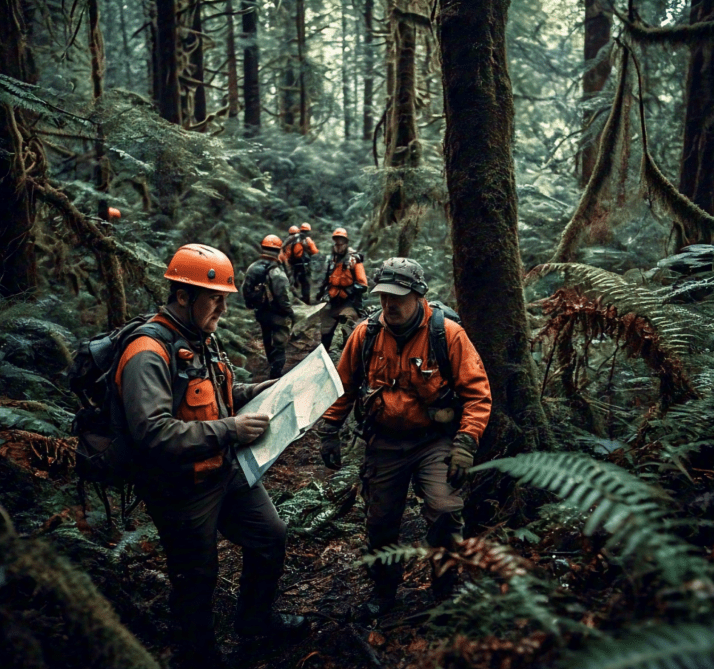
4. Teamwork:
The Strength of the Unit Matters More Than the Individual
SAR is not a solo operation. Communication, trust, and coordination with your team are critical. Whether you're leading a search, assisting medics, or managing logistics, everyone plays a role.
5. Reality vs. TV:
The Truth About SAR Work
- TV Version: High-speed rescues, helicopters, and dramatic saves.
- Reality: Long hours in tough conditions, methodical searches, and more “hurry up and wait” than adrenaline rushes.
SAR is about endurance, patience, and precision. Many missions involve grid searches, clue detection, and supporting law enforcement. The reward isn’t excitement—it’s bringing someone home.
6. Read the Book:
Gain a Massive Head Start
After 20+ years in SAR, I share some of the most hard-earned lessons that I wish I knew when I started. "So That Others May Serve" is now available in Kindle and Paperback. Learn more here or click the image below:
SAR is a Commitment, Not a Hobby
If you’re willing to train hard, show up when needed, and put the mission first, SAR can be one of the most fulfilling ways to serve. The work is demanding, but the impact is life-changing. Are you ready to answer the call?
What are some Advanced Paths in SAR?
Working with K9 Teams in Search and Rescue
Many people first explore Search and Rescue because they have a dog with potential. But true SAR deployment takes more than just interest - it takes the right dog, the right handler, and a long-term commitment to training, certification, and operational readiness.
 SAR K9 Readiness Starts with Evaluation
SAR K9 Readiness Starts with Evaluation
Before a dog can be considered for serious SAR work, three critical elements must be met:
TRAINED – Backed by documented, progressive training in real environments
CERTIFIED – Evaluated by a credible third-party K9 evaluator (not just an internal test)
RELIABLE – Performs consistently under stress, in all weather and terrain conditions
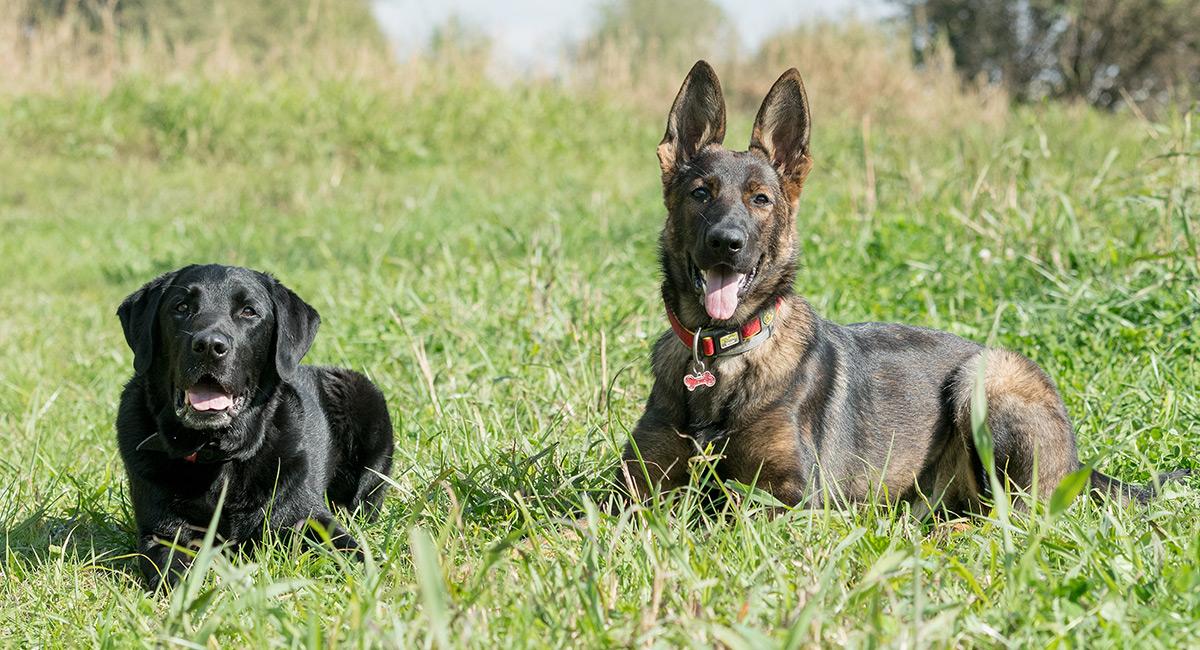
It typically takes 6 months to 2 years to bring a SAR dog to mission-ready status - even for the best teams.
 Start Smart with Your K9
Start Smart with Your K9
Before formal training begins (usually around 10–12 months), you can start building the right habits now:
- Practice basic obedience and handler focus
- Expose your dog to diverse, unpredictable environments
- Use hide-and-seek and toy reward games to build hunt drive

 Reminder: Handlers Must Be Searchers First
Reminder: Handlers Must Be Searchers First
No matter how gifted the dog, the handler is the key to the team’s success.
That’s why our K9 Bundle includes mission-tested courses that build your SAR knowledge alongside K9-specific insight.
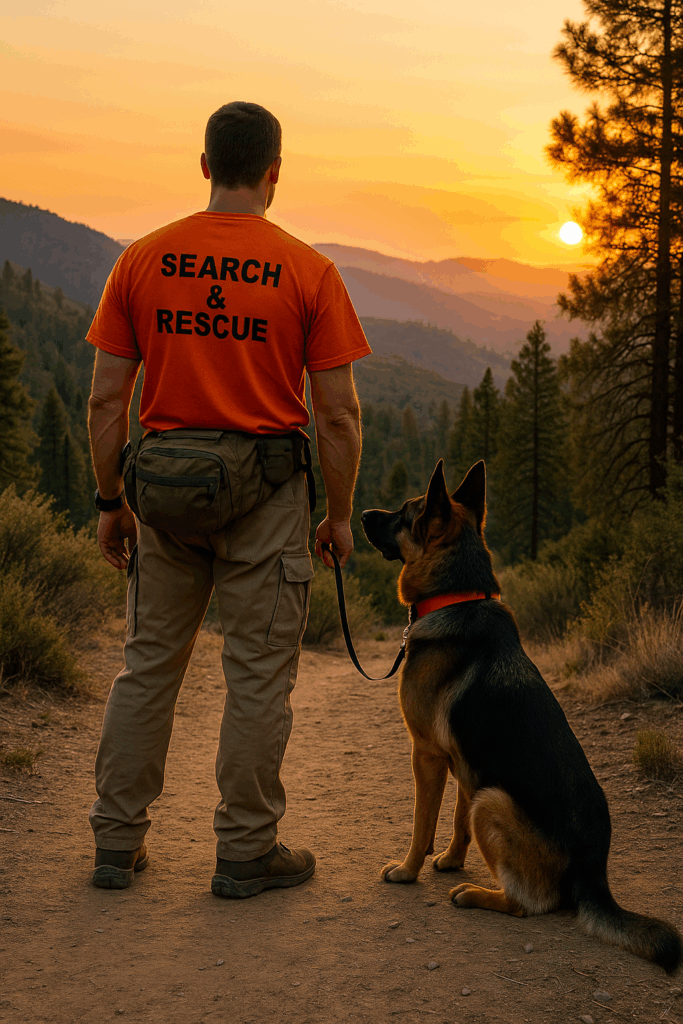
Behind every great search dog is a trained, trusted human.
 Want to Go Further? Explore the SAR K9 Handler Essentials Bundle
Want to Go Further? Explore the SAR K9 Handler Essentials Bundle
“This bundle gave me the clarity and structure I needed as a new handler. Everything just clicked.”
~ Jamie W., SAR K9 Handler & K9 Handler Essentials graduate
Designed for aspiring and current K9 handlers, this 8-course online bundle provides:
Field-tested SAR fundamentals and search strategy
HazMat and bloodborne pathogen awareness (for canine + human safety)
K9 behavior, drive theory, and training mindset
Crime scene integrity and evidence protocols
Whether you're prepping to join a team or reinforcing your skills, this online SAR K9 training bundle gives you the tools to be a prepared, professional, and safety-minded K9 handler.


Wilderness Search: Dogs tracking scent in variable terrain
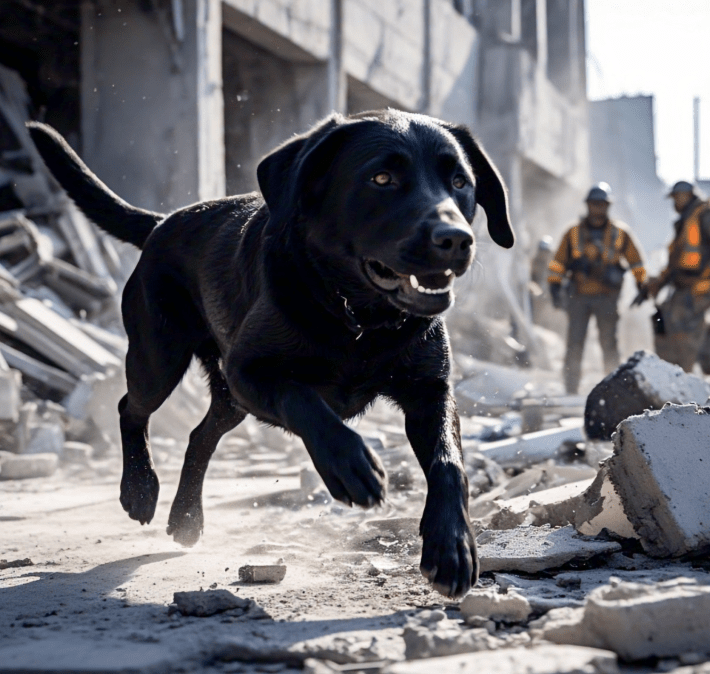
Urban Search: Dogs trained to focus in rubble and confined spaces
 SAR K9 Summary
SAR K9 Summary
- Training: Dogs must be comprehensively trained and certified by reputable evaluators.
- Proficiency: Handlers must be skilled searchers first.
 The K9 Handler bundle doesn’t replace field evaluations - but it’s trusted by K9 teams across the U.S. for solid SAR readiness foundations.
The K9 Handler bundle doesn’t replace field evaluations - but it’s trusted by K9 teams across the U.S. for solid SAR readiness foundations.What is Urban Disaster SAR (USAR)?
Urban Search and Rescue (USAR) refers to specialized teams trained to respond to structural collapse incidents and other disasters in urban or industrial environments. These scenarios often result from natural disasters such as hurricanes, earthquakes, floods, and tornadoes, or human-caused events like explosions, infrastructure failures, and terrorist attacks.
Federal USAR Teams (FEMA Task Forces)
FEMA coordinates and funds 28 (formerly 30) National USAR Task Forces across the United States as part of the National Urban Search and Rescue (US&R) Response System. Each team is sponsored by a local agency but deployable nationwide under federal mission assignments. These teams are equipped and trained to operate in complex environments involving collapsed buildings, compromised structures, and mass casualty incidents.
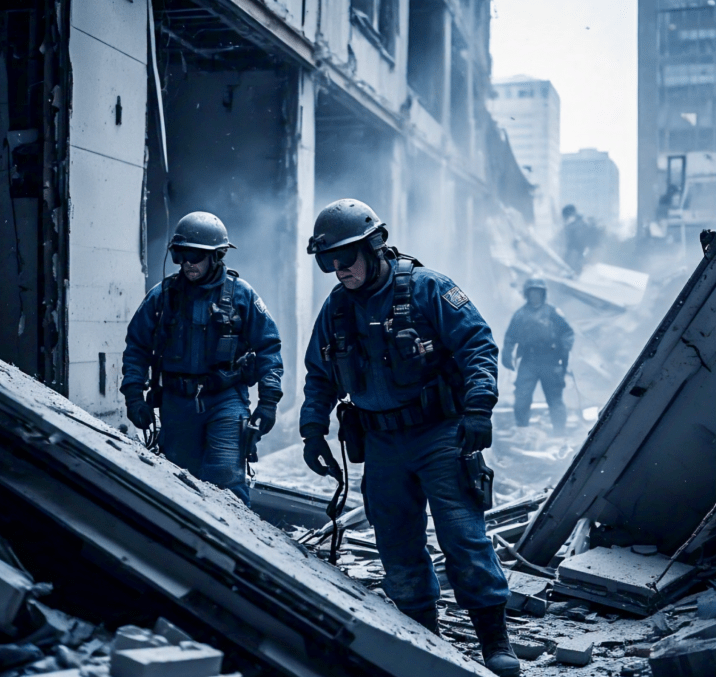
Each FEMA USAR task force typically includes 70+ members with the following capabilities:
- Medical Specialists – EMTs and paramedics trained in austere and confined-space medicine.
- Canine Search Teams – Highly trained dogs and handlers certified in live-find or cadaver detection.
- Structural Engineers – Evaluate building stability and develop safe entry plans.
- Technical Search – Operate listening devices, cameras, and breaching tools to locate victims.
- Hazardous Materials (HazMat) Specialists – Mitigate risk from chemical or biological threats.
- Logistics and Support – Maintain base operations, equipment, and resupply.
FEMA task forces are designed to be self-sufficient for up to 72 hours, and their deployments often span up to 14 days depending on mission scope and needs.
State and Regional USAR Teams
In addition to the federal system, many states and large municipalities operate their own USAR programs. These teams are usually organized under the State Urban Search and Rescue Alliance (SUSAR), a membership organization supporting interoperability and consistent standards nationwide.
State teams may be:
- Smaller in size and scope than FEMA teams
- Focused on regional mutual aid or in-state response
- Operated by fire departments, emergency management offices, or regional task forces
- Designed to escalate response capability before federal resources arrive
While the FEMA teams operate under national doctrine, state and local teams are often more agile and the first to respond after a disaster - especially in underserved or rural regions.
USAR Team Typing (FEMA and SUSAR)
USAR teams are typed by their capability, staffing, and equipment level:
- Type 1 USAR Team
- 70+ responders
- Capable of 24-hour operations for 14 days
- Fully self-sufficient
- Includes heavy technical rescue capability (confined space, trench, high-angle, etc.)
- Type 2 USAR Team
- Smaller team with fewer capabilities
- May lack full self-sufficiency
- Used for moderate damage areas or secondary support
- Type 3 USAR Team
- 23 or more personnel
- Regionally deployable
- Ideal for light- to moderate-damage rescue operations
Integration with Other Disciplines
USAR teams often work in close coordination with:
- Fire and EMS agencies (for incident support)
- Law enforcement (for site control and investigations)
- Emergency Operations Centers (EOCs) (for strategic coordination)
- Public Works and utility crews (to manage infrastructure safety)
Many USAR operations also include technical rescue operations beyond collapse rescue, such as water rescue, rope rescue, and vehicle extrication. Team members are typically cross-trained in multiple disciplines to meet the unpredictable demands of major disasters.
How do I Get Involved with a USAR team?
Getting involved with a USAR team typically requires:
- A background in firefighting, law enforcement, EMS, engineering, or SAR
- Advanced certifications in rescue, medical, or technical specialties
- A commitment to train regularly and deploy with little notice
- Physical and mental readiness for extended, high-stress operations
Most volunteers begin with local fire-rescue or SAR teams and work toward joining a recognized USAR unit.
Note: Many of the core skills used in USAR are introduced in TEAM Solutions’ courses like SAR Fundamentals, Disaster Response, and Responder Safety, helping lay the groundwork for those pursuing formal team membership or certification.
Learn More About the National USAR System: FEMA US&R Website
How Do I Become a Certified SAR Instructor?
Competent SAR instructors must meet five criteria:
- Subject Matter Knowledge
- Classroom and Student Management
- Instructional Ability
- Humility
- Use of Professional Curriculum
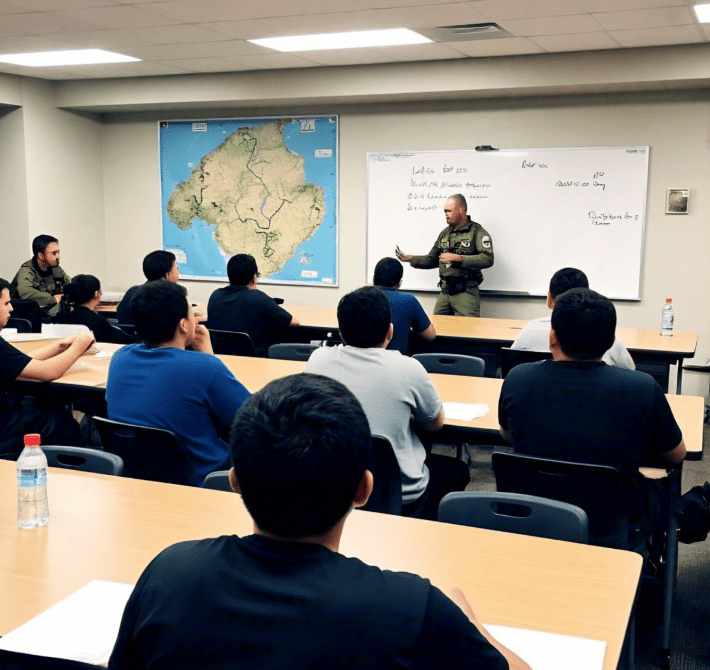
Certification requirements vary by course. For example:
- NASAR Certifications: Focus on field skills but lack stringent instructional standards.
- FEMA Certifications: Require extensive training, documentation, and evaluation.
The process is demanding. So much so that at last check, I am the only person on the planet to ever be simultaneously certified to teach FEMA’s three primary search courses: Technical Search Specialist, Canine Search Specialist, and Wide Area Search. A reflection of the high bar required for federal-level instruction.
Becoming a certified Search and Rescue (SAR) instructor is a rewarding path that allows you to train and mentor future SAR responders. Whether through CERT (Community Emergency Response Team), FEMA (Federal Emergency Management Agency), NASAR (National Association for Search and Rescue), or other SAR certification programs, the process generally involves education, field experience, and instructor training. Here’s a step-by-step guide to achieving certification:
Step 1: Gain SAR Experience
Before becoming an instructor, you need firsthand SAR experience.
- Join a SAR team – Volunteer with a local SAR unit, CERT team, or emergency response organization.
- Complete SAR missions – Actively participate in field operations, including wilderness search, disaster response, or urban rescue.
- Develop technical skills – Gain expertise in land navigation, search strategies, rescue techniques, medical response, and incident command procedures.
Step 2: Obtain SAR Certifications
Most SAR instructor programs require foundational certifications. Common certifications include:
- NASAR SARTECH I or II – Nationally recognized SAR responder certifications.
- FEMA ICS Courses – Complete ICS-100, ICS-200, ICS-700, and ICS-800 (Incident Command System training).
- Wilderness First Responder (WFR) or EMT – Medical training is often required.
- CERT Basic & Train-the-Trainer – If teaching within the CERT framework.
Check the requirements of your target instructor program to ensure you meet prerequisites.
Step 3: Develop Teaching and Leadership Skills
SAR instructors must be effective educators and mentors.
- Take instructor development courses – Many agencies offer "train-the-trainer" programs.
- Gain public speaking experience – Teaching requires clear communication.
- Assist in SAR training – Volunteer as an assistant instructor in training exercises.
Step 4: Enroll in an Instructor Certification Program
Different organizations offer instructor certifications, each with specific requirements:
NASAR SAR Instructor
- Meet SARTECH II or SARTECH I requirements.
- Attend NASAR’s Managing the Lost Person Incident (MLPI) course.
- Complete NASAR Instructor Development Program (IDP).
- Pass a knowledge and practical skills test.
FEMA CERT Instructor
- Complete CERT Basic Training.
- Take CERT Train-the-Trainer (TTT) – A specialized FEMA course.
- Get sponsored by a local emergency management agency.
State-Specific or Agency-Specific SAR Instructor Programs
- Some states and agencies offer their own SAR instructor certification.
- Requirements may include additional training, experience, and state-level exams.
Step 5: Pass Instructor Evaluations
Most instructor programs require:
- A written exam on SAR principles and instructional techniques.
- A practical teaching demonstration, where you lead a SAR lesson.
- A peer review process to assess your ability to train responders.
Step 6: Maintain Certification and Continue Training
Once certified, you must maintain your credentials by:
- Attending continuing education courses.
- Conducting a minimum number of training sessions per year.
- Staying active in SAR operations.
- Renewing medical and ICS certifications as required.
Conclusion - How to Become a Certified Instructor
Becoming a SAR instructor is a challenging but fulfilling journey. It requires hands-on SAR experience, specialized training, and strong instructional skills. By following the steps above and meeting the certification requirements of organizations like FEMA, NASAR, or CERT, you can become a certified SAR instructor and help train the next generation of responders.
Paid Roles in SAR
While SAR is predominantly volunteer-based, paid opportunities exist with:
- Government Agencies: Coast Guard, Forest Service, National Park Service.
- Law Enforcement: Sheriff’s Departments, Border Patrol.
- Fire service: Swiftwater, flood and disaster rescue. Paid and volunteer.
- Military: Pararescue or rescue swimmer roles.
However, even in these paid positions, search and rescue might not be your primary function. It might be a duty you perform alongside other responsibilities.
Another option to consider is getting an Emergency Medical Technician (EMT) certification. While not directly search and rescue, EMTs can be called upon to assist search and rescue teams in providing medical care to those found.
My route started with local volunteer SAR prior to joining a state team who also has a federal mission.
State and federal missions were paid jobs but the vast majority of the training - which was a massive amount of time and effort - was not.
What is International SAR?
The International Search and Rescue Advisory Group (INSARAG) is a global network of more than 90 countries and organizations operating under the United Nations umbrella. Established in 1991, its mission is to improve international urban search and rescue (USAR) coordination during major disasters - particularly in cases of earthquakes and structural collapse.
INSARAG sets internationally recognized standards through the INSARAG External Classification (IEC) process, which certifies SAR teams as either Medium or Heavy USAR teams based on their self-sufficiency, operational readiness, and technical capability. These certified teams are better able to coordinate in the field, speak a shared operational language, and deploy rapidly in times of crisis.
The organization also maintains the INSARAG Guidelines, a detailed framework of best practices for team deployment, coordination, and interoperability. In addition to evaluations, INSARAG supports regional simulation exercises, policy development workshops, and knowledge-sharing between countries.
Participation in INSARAG enhances a country's ability to contribute meaningfully to international humanitarian response, ensuring more effective collaboration in life-saving missions.
Downloads, Tools, and Job Aids
Browse the Curated Collection of Templates, Pocket Cards, Quick-Start Guides, and Job Aids
Showing 1–8 of 11 resultsSorted by latest
-

Response Leadership Digital Essentials
$25.00 Add to cart -

ICS Planning & Operations Digital Essentials
$15.00 Add to cart -

Quick Start Guide to Crisis Response Leadership
$0.00 Add to cart -

So That Others May Serve – Audio Deep Dive
$10.00 Add to cart -

SAR Navigation & Reference Pack
$10.00 Add to cart -

SAR Digital Essentials Mega Pack
Price range: $5.00 through $10.00 View products -

SAR Pocket Card Pack
$5.00 Add to cart -

SAR Disaster Support & Planning Pack
$10.00 Add to cart
Additional Resources
Do you have Additional SAR Articles and Insights?
Search & Rescue (SAR) Training – Frequently Asked Questions
Is TEAM Solutions SAR training accepted by SAR teams?
In many cases, yes. Teams across the U.S., Canada, and beyond use TEAM Solutions for onboarding and refresher training. Requirements vary by agency, so confirm locally. Our courses are FEMA/NIMS‑aligned and map to NASAR, NFPA 2500, ASRC, and state‑level guidance.
How do your courses align with national SAR standards?
Courses follow FEMA/NIMS principles and reflect: NASAR SARTECH (cognitive/planning topics), NFPA 2500 awareness‑level competencies, ASRC FTM/FTL expectations (lost person behavior, field ops), plus common state program elements.
What is the free SAR Primer and how long does it take?
A two‑week email mini‑course for new subscribers. Concise lessons drawn from SAR Fundamentals help you explore SAR before committing.
What does the SAR Fundamentals course include?
A self‑paced online class covering SAR principles, responder roles, safety protocols, search tactics, and terminology. Includes a certificate of completion and a sharable course summary.
What’s in the SAR QuickStart Bundle™?
SAR Fundamentals + Bloodborne Pathogens Awareness, a field‑tested digital toolkit, and an exclusive training audio from So That Others May Serve™—built to show credible readiness early.
What is the SAR Responder Essentials Certification?
An online certification track with unlimited access to SAR courses and tools in one place. FEMA/NIMS‑aligned, supports onboarding, advancement, and refreshers. Digital certificates provided.
Do you offer team enrollment and management?
Yes. Single‑payer or individual‑payer models, with group leaders, member progress tracking, transcripts, custom assignments, and certificate management.
Do online courses replace field evaluations?
No. Online training builds knowledge and readiness; field evaluations and team sign‑off are still required for deployment.
Contact Information
Have questions or need guidance? Reach out or subscribe to our newsletter for tips and updates.
Just For Fun
Test your SAR knowledge!
TL;DR – This Page in 5 Sentences:
- TEAM Solutions trains SAR responders worldwide with FEMA/NIMS-aligned courses.
- Training aligns with NASAR, NFPA 2500, ASRC, and state SAR standards.
- Options include a free primer, SAR Fundamentals, bundles, and the SARESS certification track.
- Courses are self-paced, online, and include certificates of completion.
- TEAM Solutions training is trusted by individuals and agencies across the U.S., Canada, Europe, and beyond.
Site content written by Mike McKenna, nationally credentialed SAR instructor, 20+ years field experience.



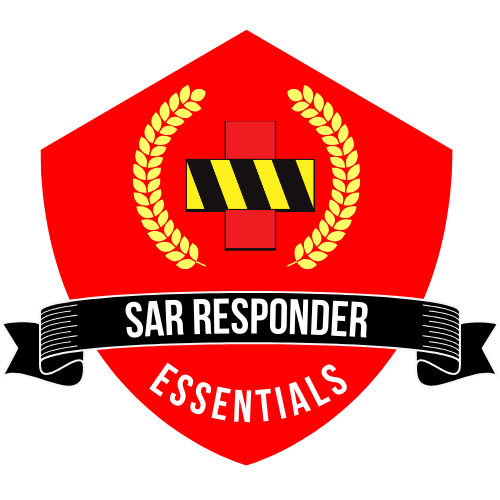

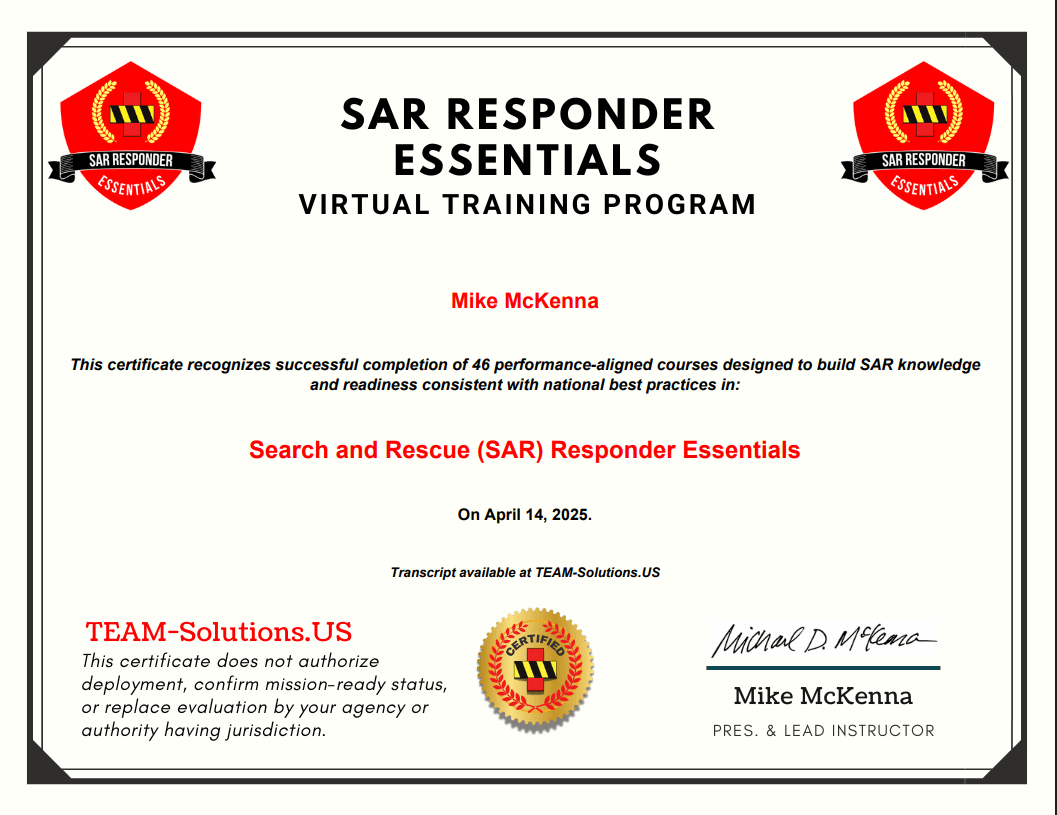
 New to SAR?
New to SAR?
 Browse the Course Catalog here or click the logo below.
Browse the Course Catalog here or click the logo below.
